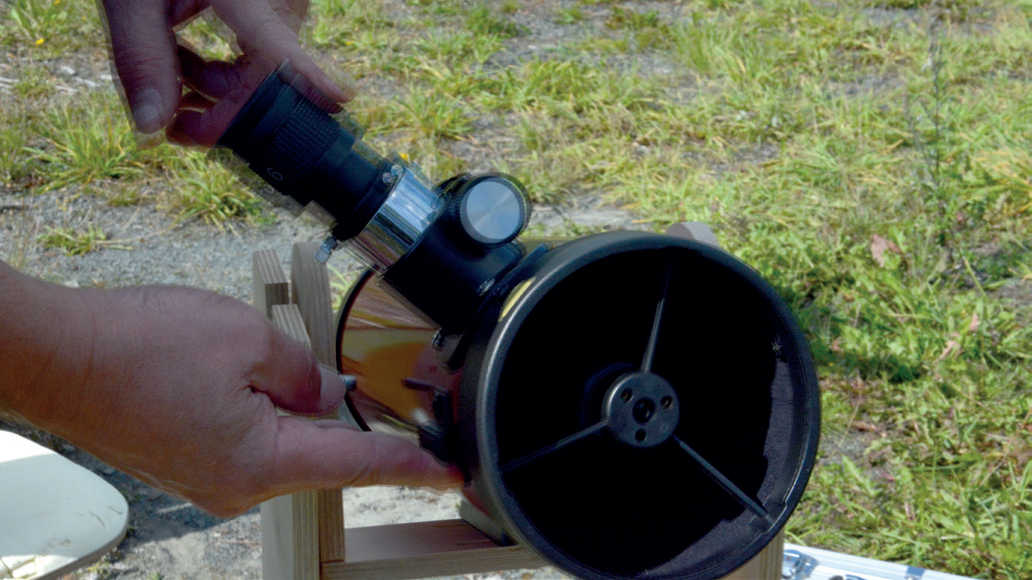Clever ways to stabilise tubes
If the tube of your Newtonian telescope changes shape at will, it is too pliable. Properly dimensioned tube clamps help.
 A tube that can be dented with two fingers is simply too soft. S. Wienstein
A tube that can be dented with two fingers is simply too soft. S. WiensteinLight, stable, inexpensive – if only that was all that we ask from our telescope tube. It should also be insulated, black, and preferably detachable. The reality however can be different: quite a few tubes are neither able to cope with the weight of the optics nor with heavy accessories attached to the focuser. This will result in misaligned optics if the tube distorts when it is panned. Or there are vibrations, in the worst case even resonance, when using tracking motors. Tightening tube clamps can also deform the tube, so that a Newtonian goes out of alignment if the tube is rotated.
If you want to avoid needing a complete replacement, you can make improvements. The tube becomes oval with flexion, which can be prevented by snug-fitting reinforcement rings. Close-fitting rings on the outside of the tube will also force the tube to retain its round and therefore straight shape. This also helps to keep a Newtonian’s focuser in the correct position. A long tube clamp reinforcement stabilises the tube – provided it is itself stable enough.
A Hargreaves Strut, a connecting rod between the counterbalance bar and one or both tube ends, creates stable triangles, thereby preventing vibrations. The triangle shape with appropriate angles should also be the basic principle behind all truss tube designs: an isosceles triangle absorbs forces very well whereas a reinforcement made of bars arranged in parallel does very little.
Author: Sven Wienstein / Licence: Oculum Verlag GmbH
